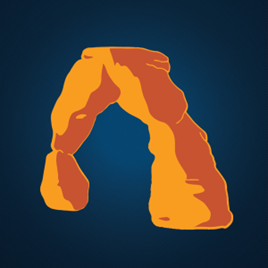

Telehealth & Remote Patient Monitoring Ecosystem 2023
Vendor-Reported Capabilities and Customer Adoption
Telehealth and remote patient monitoring (RPM) solutions have grown in adoption, giving providers new ways to deliver more flexible care. While telehealth adoption especially was initially spurred by COVID-19, energy in both areas continues because of factors like value-based care, staffing shortages, and the desire to make care delivery more flexible and strategic. This report examines the broad ecosystem of telehealth and RPM technology—specifically, vendor-reported breadth and depth of adoption by their provider organization customers.
In KLAS’ Telehealth Ecosystem 2021 report, RPM was included as a subcategory within telehealth. Due to continued adoption and advancements in both spaces, telehealth and RPM are now examined separately.
The Telehealth & Remote Patient Monitoring Ecosystem
To help healthcare organizations quickly understand the breadth of vendors’ telehealth and remote patient monitoring offerings, KLAS has developed an ecosystem overview meant to guide organizations to vendors who can accommodate their specific care types, use cases, and technical requirements. Vendors were asked to self-report which telehealth and RPM capabilities are available to customers today and the depth of adoption among their customer bases. (Note: Breadth is not an indication of performance but of vendor focus.) This vendor-reported information has not been validated by KLAS, though the charts below indicate which vendors’ solutions are currently measured by KLAS. Overall scores for KLAS-measured solutions are also shown at the end of the report.
Types of Telehealth & Remote Patient Monitoring Capabilities
Delivery
Delivery models and types of care a solution can be used for (e.g., inpatient care, home health)
Technology and connectivity
Methods and tools for delivering care to patients (e.g., features, hardware, devices)
Workflow and content
Organization and patient workflow capabilities (clinical and administrative) and ways to deliver clinical content
Integration
Capabilities surrounding integration with key systems (mainly EMRs), support of interoperability standards, and data flow (bidirectional vs. unidirectional)
Though they may also have additional focuses, in this report, vendors are grouped by their primary focus, as shown in the table below. The table also shows which vendors are currently measured by KLAS in telehealth, RPM, or other segments and which are not. Additionally, a handful of vendors that are currently measured by KLAS but did not self-report their capabilities are noted below. KLAS will continue to expand research into developing market segments related to telehealth and RPM.
Telehealth
Virtual Care Platforms: Amwell & Teladoc Health Lead in Reported Breadth of Capabilities and Care Settings; Caregility Offers Deep Inpatient Use Cases

eVisit, who announced their acquisition of Bluestream Health in April 2023, reports moderate breadth and adoption of capabilities related to clinical and administrative workflows. They have several more features on their development road map. Bright.md is different from most KLAS-measured vendors in the segment—they offer only an asynchronous virtual care solution. The vendor reports customer adoption mostly for outpatient and some emergency department use cases.
Video Conferencing Platforms: Doximity Reports Broad Care Settings, Doxy.me Reports Workflow Feature Breadth; Updox Offers Add-On Telehealth Capabilities for Existing Customers

2023 Best in KLAS winner Doximity is known for telephony (not measured here) and video visits; they report some inpatient use, such as virtual rounding, as well as some adoption of payer use cases. Their reported breadth of features has increased to moderate since KLAS’ 2021 report. They report deep adoption of video conferencing capabilities (multiparty calls, file/image sharing) but offer fewer clinical and administrative workflows than other vendors. They also report live integration with Epic, Oracle Health (Cerner), and MEDITECH via FHIR. Doxy.me also offers a moderate breadth of capabilities; they are used mostly in outpatient settings but report some uses in other care settings. Vendor-reported capabilities include a variety of workflow features (billing, chatbot triage) and unidirectional integration with a wide range of EMRs. Updox is used exclusively in outpatient settings and offers telehealth as an add-on capability to their other, non-telehealth capabilities, such as eFax. Bidirectional integration is focused on smaller, outpatient EMRs, such as Practice Fusion and Amazing Charts, via a proprietary API.
EMR-Centric Virtual Care Platforms: Epic Reports Highest Breadth in a Varied Field; Decisions for EMR-Based Solutions Largely Based on Integration

Other KLAS-Measured Vendors Offering Telehealth Functionality (Measured in Non-Telehealth Segments)

Telehealth Solutions Not Currently Measured by KLAS

Remote Patient Monitoring
Broadly Used Health Recovery Solutions & Outpatient-Focused MD Revolution Report Continuous Monitoring in Development; TimeDoc Health Offers Lighter Outpatient Solution

Current Health reports continuous monitoring capabilities and the highest number of hospital-at-home use cases (e.g., cellulitis, UTIs). The employer-focused Teladoc Health solution is used to monitor employees’ blood pressure, blood sugar, weight, and activity. VitalTech is the only measured vendor who reports offering ECG capabilities, and the solution can be used to monitor a variety of chronic and non-chronic conditions, such as pneumonia and UTIs. Similar to TimeDoc Health, Optimize Health provides a lighter offering of capabilities with an outpatient focus. Both CareSimple and CareSignal (a Lightbeam company) report moderate capability levels. CareSimple uses proprietary devices (including spirometers), and CareSignal takes a deviceless RPM approach via patient responses to text messages or phone calls.
Other KLAS-Measured Vendors Offering RPM Functionality (Measured in Non-RPM Segments)

RPM Solutions Not Currently Measured by KLAS

Telehealth Capabilities Index
Delivery
Patient invitation method:
SMS
Email
Patient portal
Other
Patient encounter experience:
Browser-based: mobile
Browser-based: desktop
Dedicated app
Patient portal
Other
Use cases:
Scheduled video visits
On-demand/urgent care video visits
Telespecialty calls (remote specialist meeting with patient or another physician)
Asynchronous virtual care
Virtual sitting
Virtual nursing
eICU
Acute hospital at home
Payer
Other
Care settings:
Outpatient
Inpatient
ICU
Emergency department
Paramedic/emergent transport
Post–acute care/home health
Hospital at home
Other
Staffing models:
Direct to consumer
Physician services
Organization-provided physicians
Technology and Connectivity
Features:
Multiparty/group visits
Screen sharing
Browser-based (patients not required to download app to join)
No patient account/login required to join
File/image sharing
Provider audio or video pre-check
Patient audio or video pre-check
Chat
Surveys/questionnaires
Hardware source:
Proprietary vendor devices
Commercially available devices
BYOD
Hardware compatibility:
Tablets
Cameras
Audio/microphones
Carts
Other
Diagnostic devices:
Stethoscope
Thermometer
Otoscope
Blood pressure monitor
Oximeter
EKG
Fall detector/accelerometer
Other
Workflow and Content
Clinical workflow capabilities:
EMR documentation
CPOE
Chatbot/triage
Alerts
Command center/overall view of telehealth operations
Patient encounter experience:
Scheduling
Intake (patient check-in/registration)
Virtual waiting room
Patient co-pay/pre-payment
Real-time eligibility verification
Billing
Clinical content capabilities:
Care plans/pathways
Patient education: text/documents
Patient education: video
Patient education: interactive
Integration
EMR integration flow:
Bidirectional EMR integration
Unidirectional EMR integration
Live EMR vendor integration:
Allscripts
athenahealth
eClinicalWorks
Epic
Greenway Health
MEDITECH
NextGen Healthcare
Oracle Health (Cerner)
Other
Interoperability standards:
HL7
FHIR
Context-aware linking
Proprietary API/SDK
Other
Remote Patient Monitoring Capabilities Index
Delivery
Care settings:
At home (patients take readings while at home)
Post–acute care/long-term residential facilities
Acute hospital at home
Employer program
Payer
Other
Conditions measured:
Diabetes
Hypertension
Heart disease/CHF
COPD
Surgical recovery
Weight management
Cellulitis
UTI
COVID-19
Prenatal health
Pneumonia
Sleep
Other
Additional services:
Patient-facing technical support
Care management services
Inventory/device management (sending device kits, device management, etc.)
Revenue cycle/billing services
Technology and Connectivity
Hardware source:
Proprietary vendor devices
Commercially available devices
BYOD
Diagnostic devices:
Blood pressure cuff
Pulse oximeter
Glucometer/glucose monitor
Hybrid/continuous (one device measures multiple vital signs/metrics)
Weight scale
Fall detector/accelerometer
Thermometer
Otoscope
Spirometer
ECG
Stethoscope
Activity tracker
Sleep tracker
Medication dispenser
Other
Vital signs/metrics measured:
Blood pressure
Heart rate
Blood oxygen
Blood sugar
Respiratory rate
Fall detection
Temperature
Weight
Air volume/lung capacity
Heart rhythm
Activity/movement
Sleep
Other
Functionality:
Episodic measurements
Continuous monitoring
Care team alerts
Patient prompts
Patient SMS or chat communication
Ability for provider/care manager to have a phone call with patient
Ability for provider/care manager to have a video call with patient
Secure data sharing
Patient device connectivity:
Wi-Fi
Cellular
Bluetooth
Other
Workflow and Content
Clinical workflow capabilities:
EMR documentation of patient measurements
Establishing healthy parameters for patient readings
Provider alerts
Administrative workflow capabilities:
Clinical reporting and analytics
Device/inventory reporting and analytics
Billing/reimbursement reporting and analytics
Other reporting and analytics
Clinical content:
Care plans/pathways
Patient education/coaching: text/documents
Patient education/coaching: video
Patient education/coaching: interactive
Integration
EMR integration flow:
Bidirectional EMR integration
Unidirectional EMR integration
Live EMR vendor integration:
Allscripts
athenahealth
eClinicalWorks
Epic
Greenway Health
MEDITECH
NextGen Healthcare
Oracle Health (Cerner)
Other
Interoperability standards:
HL7
FHIR
Context-aware linking
Proprietary API/SDK
About This Report
This report is designed to give provider, payer, and employer organizations a clear picture of what capabilities vendors offer to meet their core telehealth and remote patient monitoring needs. Most data in this report comes from vendor-reported information.
A limited amount of KLAS performance data is also shared. Overall performance scores are measured on a 100-point scale and represent the weighted average of customer respondents’ answers to 16 numeric ratings questions and 4 yes/no questions. Some respondents choose not to answer particular questions. When the number of unique organization responses for a particular question is less than 15, the score for that question is marked with an asterisk (*) or otherwise designated as “limited data.” If the sample size is less than 6, no score is shown.
Note: This report used a data-collection window of 12 months. KLAS’ 2023 Patient Engagement Ecosystem report, which includes some of the same vendors found here, used a data-collection window of 18 months.
Writer
Natalie Hopkins

Designer
Jessica Bonnett

Project Manager
Andrew Wright
This material is copyrighted. Any organization gaining unauthorized access to this report will be liable to compensate KLAS for the full retail price. Please see the KLAS DATA USE POLICY for information regarding use of this report. © 2026 KLAS Research, LLC. All Rights Reserved. NOTE: Performance scores may change significantly when including newly interviewed provider organizations, especially when added to a smaller sample size like in emerging markets with a small number of live clients. The findings presented are not meant to be conclusive data for an entire client base.







